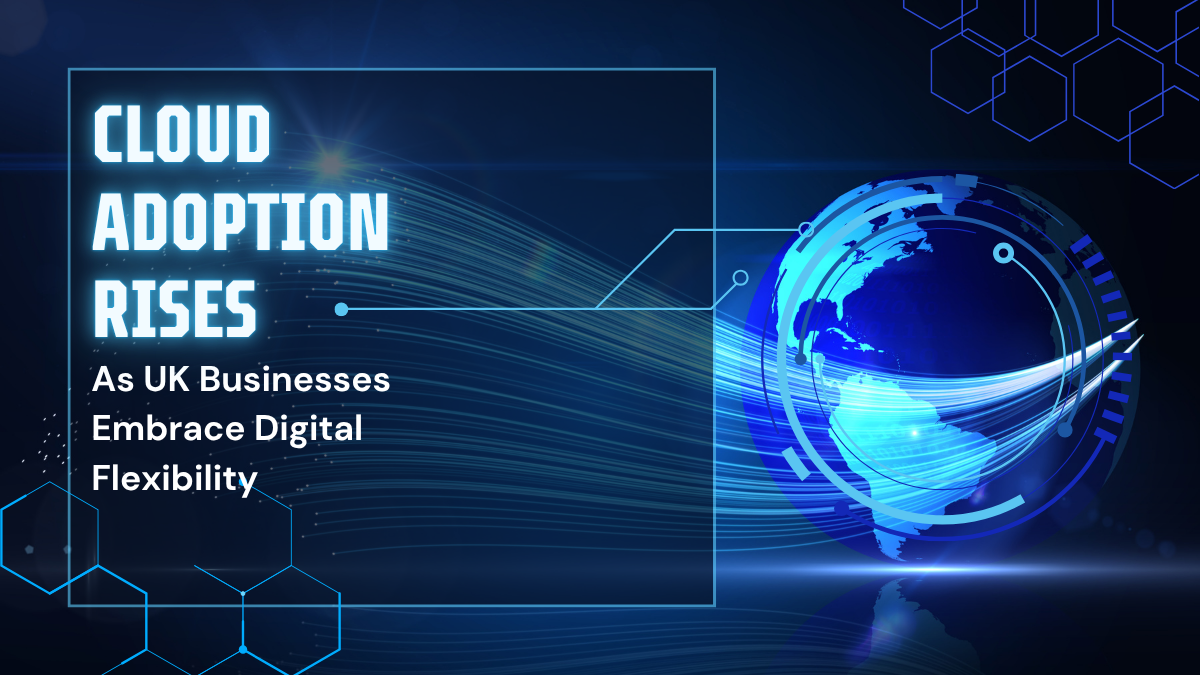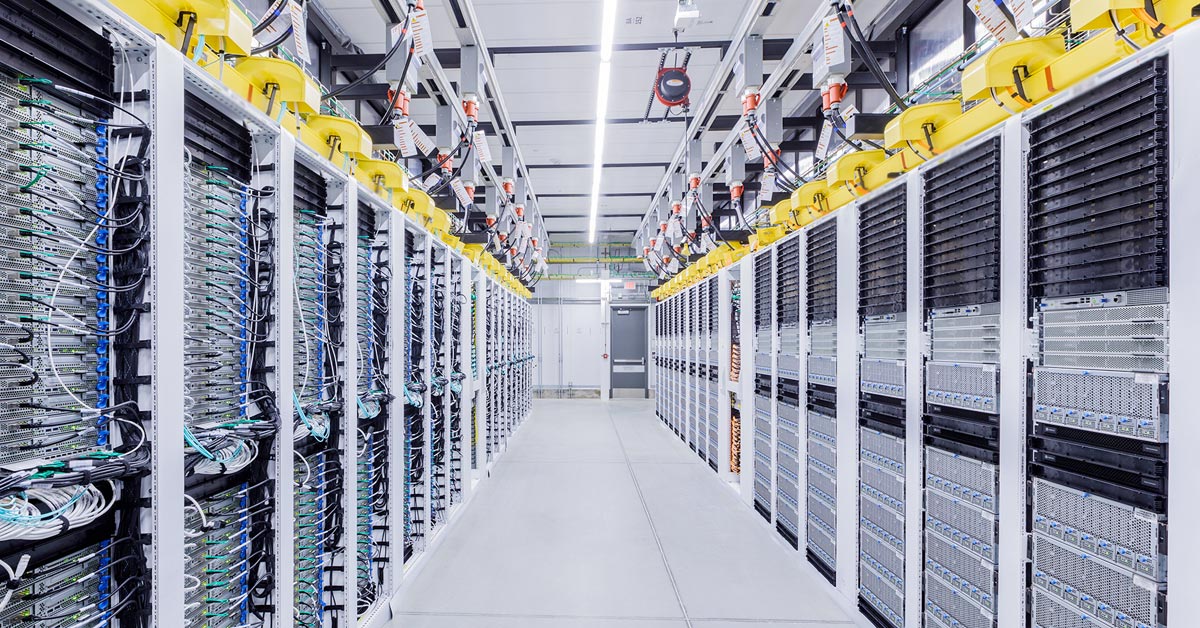An effective IT modernisation strategy enables a business to upgrade specific parts of its IT infrastructure, technology, customer services, applications, or business operations to meet rapidly changing business demands and promote business resilience, continuity, and scalability.
The hidden business costs of outdated technology include higher energy bills, lost customers, higher employee turnover, and increased security breaches to mention a few. Avoid the added cost of outdated legacy systems or expensive infrastructure using a successful IT modernisation strategy.
What Is IT Modernisation?
An IT modernisation strategy is a strategic approach to upgrading specific IT infrastructure, outdated systems, business processes, and existing procedures to adapt to rapidly changing business demands. For example, an information technology modernisation strategy can replace outdated IT systems or infrastructure using technological advancements to enhance security, efficiency, or scalability.
IT Modernisation vs. Digital Transformation
Digital transformation is the complete overhaul of technology, infrastructure, and business operations. Indeed, 2025 is the year for automation and digital transformation, but the strategy refers to upgrading entire digital foundations using technological advancements to improve customer experiences.
Digital transformation is organisation-wide with a different end goal. Meanwhile, an IT modernisation strategy describes how businesses are upgrading legacy systems, infrastructure, IT systems, or business operations to leverage emerging technologies in specific modernisation efforts.
Digital transformation ensures that businesses implement technological advancements according to evolving industry, market, and customer expectations while an IT modernisation strategy ensures companies use digital technology to enhance and streamline overly complex systems.
Why Businesses Modernise IT
Successful IT modernisation efforts allow a business to be innovative, agile, secure, scalable, and cost-effective. Organisations can implement IT modernisation to enhance specific areas within the business using the latest digital technology. Here are the reasons why companies use IT modernisation initiatives:
- Operational Efficiency: Leverage operational efficiency when upgrading systems and using infrastructure modernisation initiatives to automate workflows and streamline repetitive tasks. Enhance business operations by providing employees with the right tools and technologies.
- Enhanced Security: Ensure robust data security to protect sensitive information against emerging cyber threats and attacks. Prevent data breaches using an IT modernisation strategy designed to improve data security with state-of-the-art protocols and penetration testing modules.
- Scalability and Flexibility: Data and cloud modernisation initiatives enable scalability and flexibility by improving accessibility to broader infrastructure capabilities and advanced data analytics. Scale the business with modernised IT infrastructure and data processing to identify key trends.
- Regulatory Compliance: Ensure compliance with regulatory standards in multiple industries with automated reporting, streamlined workflows, and improved cybersecurity. An IT modernisation strategy will ensure seamless compliance using technology to automate various processes.
- Immediate Cost Savings: Companies can benefit from immediate cost savings related to cloud migration services due to lower maintenance needs and costs. Alternatively, optimised software licenses and AI-powered automation can reduce operational costs.
- Competitive Advantage: Implementing the latest digital technology provides companies with a competitive advantage over other businesses. A recent article even suggests that companies can estimate the duration of their competitive advantages using emerging technologies.
- Better Business Intelligence: Improve business intelligence and make data-driven decisions using modern strategies and technologies to analyse data. For example, AI in financial and legal services streamlines analytics to make informed decisions about business objectives.
- Improved Customer Experience: Upgrading systems automatically improves the customer experience when they don’t have to endure delays or security breaches while using the digital products provided by a company. Updated technology solutions provide better experiences.
The Benefits of Modernised Enterprise Content Management Systems
An effective IT modernisation strategy using emerging technologies to replace legacy systems like enterprise content management (ECM) systems can further benefit businesses in the following ways:
- Information Management: Modern systems manage information more effectively using cloud environments to enable secure document management, data storage, and automation. Seamlessly connect the dots between previously siloed databases using modern ECM systems.
- Risk Mitigation: Mitigate risks easily in today’s ever-evolving digital threat landscape using effective security protocols like encryption, role-based administration, selective access, two-factor authentication, and permissions to automatically identify and handle emerging threats.
- Business Continuity: Update business processes, deliver advanced customer applications, reduce IT infrastructure or maintenance costs, and streamline how employees leverage technology to promote business continuity with modernised enterprise content management systems.
Emerging Technologies in IT Modernisation
New technologies enable businesses to leverage the latest tools and solutions to enhance any IT system, department, technology, infrastructure, or operation. Consider the latest technologies in the technology stack when modernising core areas of business operations and systems.
Advanced Analytics
A technology modernisation strategy focused on data analytics improvements or integration can streamline business decisions about future marketing initiatives based on large amounts of processed data. Statistics used in data analytics can also identify patterns for new revenue opportunities.
Artificial Intelligence (AI)
Artificial intelligence enables companies to automate routine and rule-based tasks to streamline efficiency and productivity. Our artificial intelligence consultants offer expert advice on how to implement AI to automate mission-critical operations and replace human intervention.
Cloud Computing
Cloud computing platforms allow companies to securely store and process data across multiple networks or data centers using serverless infrastructure that doesn’t require physical maintenance. The worldwide enterprise cloud strategy stats show that 73% of enterprises adopted hybrid clouds in 2024.
Intelligent Automation (IA)
Intelligent automation using AI and ML technologies ensures businesses automate repetitive tasks and processes for cost savings and reduced errors. The Business Research Company suggests that intelligent process automation is projected to reach a global market value of £14.33 billion in 2025.
Machine Learning (ML)
Machine learning app development allows businesses to leverage data algorithms for deep learning and predictions that could guide future business decisions. Machine learning technology doesn’t require in-depth pre-programming as the learning models program the algorithm as it matures.
Quantum Computing
McKinsey suggests that quantum computing is an emerging approach to solving overly complex calculations using physics fundamentals. The computing platform can run multiple complex calculations at once, allowing businesses to perform complex computing tasks much faster than regular platforms.
Other Technologies
Businesses worldwide also modernise systems, operations, and capabilities using the Internet-of-Things (IoT) to reach more users, edge computing to improve performance with lower latency, and containers to seamlessly manage multiple applications in cloud computing platforms.
Different Types of IT Modernisation Used By Global Businesses
The distinct types of IT modernisation enable businesses to focus on specific improvements to drive success, whether companies need to automate operations, reduce exposure to cyber threats, or upgrade outdated infrastructure that costs more than its worth in maintenance and repairs.
Application Modernisation
Upgrading legacy systems using application modernisation initiatives enables businesses to migrate outdated applications to new secure, scalable, and agile platforms using the latest technologies. Partner with developers who understand a vast range of technologies to ensure the latest tech stack.
Cloud-Based Modernisation
A cloud migration company can modernise business processes using cloud solutions with a cloud-based operating model. Cloud-based solutions provide greater accessibility, smoother processes, and seamless operations without the need for continuous maintenance and upgrades.
Data Modernisation
Data modernisation is similar to cloud-based solutions because expert development teams will migrate existing data centers to cloud environments, replacing outdated systems with modern IT environments for safer and faster processing. Cloud solutions for data modernisation ensure governance and security.
IT Infrastructure Modernisation
IT infrastructure modernisation projects enable enhanced security and component operations on the back end of software and other business applications. Infrastructure modernisation integrates updated hardware components in the physical servers to enhance performance and connectivity.
Process Modernisation
Modernise processes using new technologies to reduce operational costs and enhance efficiency and productivity. Process modernisation can automate market analysis and drive data-based decisions using machine learning app development or AI for automated workflows and operations.
Security Modernisation
IT modernisation efforts often include security improvements using new technologies that enable efficient data security or cybersecurity. An effective IT modernisation strategy from a team using various software testing methodologies will enhance the security of modern IT environments.
Technology Modernisation
Technology modernisation can deliver better business intelligence, data analytics, and streamlined operations. Use new technologies to improve old processes, operations, and customer-facing apps. Benefit from a range of services to develop and improve software using cutting-edge technologies.
How to Create and Execute a Successful IT Modernisation Strategy
Use our step-by-step process to create a successful IT modernisation strategy that streamlines operations, automates processes, or reduces costs involved with legacy system maintenance. The IT modernisation journey is strategic, and our process ensures proper planning and implementation.
1. Assessment and Planning
Achieve improved efficiency with a competitive advantage by assessing existing systems, infrastructure, operations, applications, and technology to identify outdated systems, inefficiencies, and obsolete technology. Also, conduct an analysis to identify market changes.
Determine which core areas no longer align with business objectives, and strategically define and prioritise goals based on scalability, compliance, security, and other important factors that require immediate attention and upgrades. All objectives must align with the core business model.
2. Stakeholder Engagement
The successful execution of an IT modernisation strategy requires stakeholder engagement and senior management buy-in to ensure the IT modernisation journey is seamless, whether adopting cloud computing, automation solutions, infrastructure modernisation, or new software development services.
Ensuring alignment with the overall business strategy and completing the analysis of market changes will encourage buy-in from C-suite executives. However, the modernisation process also requires businesses to engage stakeholders and users to define what would ultimately modernise systems.
3. Choosing the Right Technology Stack
Conduct needs assessments and do some research regarding emerging technologies before choosing the ultimate technology solutions that drive IT modernisation goals forward, whether adopting cloud computing, integrating AI technology, or using machine learning app development.
Discuss the goals outlined in step one with expert artificial intelligence consultants capable of advising businesses on the best AI-driven technological advancements aligning with the overall business strategy. Seeking expert advice would be ideal for genuine innovation in IT modernisation.
4. IT Modernisation Roadmap
IT modernisation initiatives for improved efficiency with a competitive edge require a detailed roadmap outlining the entire process. Partnering with a custom software development company that understands using the latest technologies in a strategic modernisation plan will increase the chance of success.
A little bit of project management goes a long way during this phase. However, a detailed roadmap outlining business objectives, modernisation goals, implementation steps, milestones, and resource allocations will streamline the entire journey and provide direction for all involved.
5. Quality Assurance Testing
Companies can ensure business continuity and improve overall modernisation efforts by outsourcing quality assurance software testing before implementation. Trusted development companies use various testing methodologies and security protocols to secure modernisation efforts.
6. IT Modernisation Implementation
The next stage of the IT modernisation process is to strategically plan the execution of the outlined improvements to the IT infrastructure, systems, and applications. Keep stakeholders involved and track the completion of each roadmap stage using key performance indicators (KPIs).
7. Training and Support
A successful IT modernisation strategy also depends on effective project management and employee training for overly complex systems using AI and ML. Ongoing support and access to training from reliable artificial intelligence consultants throughout the modernisation plan ensures ongoing success.
8. Measure and Adjust
Continue to monitor the key performance indicators in each stage of the IT modernisation initiatives to ensure progress toward objectives like enhanced operational efficiency or cost-effectiveness. Track KPIs and make adjustments to integrate continuous improvement in the modernisation process.
Modernise Your IT Operations With Pulsion
Our industry-leading experts have helped many clients design and execute a successful IT modernisation strategy, replacing legacy systems and supporting them in an ongoing process. Our range of case studies also reveals various digital transformation and systems modernisation efforts.
Our experts offer a variety of services using cutting-edge technologies to ensure seamless IT modernisation plans. Learn more about us to see how we’ve served global businesses with IT modernisation and digital transformation initiatives for 30 years.
Leverage effective IT modernisation with a team of experts that provide machine learning app development, custom software development, mobile app development, and even digital strategy consulting services. Our artificial intelligence consultants are ready to transform your IT operations.
Gain access to the competitive edge that drives growth and improves revenue with modern IT systems running the entire operation smoothly from the server and client sides. Contact us today to discover how we can help your business strategise the modernisation efforts and execute them successfully.
IT Modernisation Strategy Conclusion
The right IT modernisation plan can help businesses deliver operational excellence, achieve massive operational savings, reduce long-term maintenance needs, and improve the customer experience if greater customer retention and loyalty are the primary objectives.
Understand the range of technologies available to help companies modernise IT operations, and use the step-by-step instructions to update legacy systems, replace outdated software, and execute initiatives without a hiccup. Contact us today to discuss your IT modernisation needs and goals.
IT Modernisation Strategy FAQs
What is an example of IT modernisation?
Companies often use cloud migration services to move business-critical applications, data, and computing capabilities to cloud environments. Cloud migration allows for cost savings, reduced maintenance needs, and scalable business growth.
What are the common challenges of IT modernisation?
Working with the wrong technology partner leads to potential challenges. Some challenges businesses commonly face when trying to modernise existing IT include:
- Long-standing legacy systems that cost more when trying to integrate new technologies.
- Upfront budgetary constraints and investment needs in new tech, hardware, and applications.
- A lack of change management to encourage the adoption of a new organisational culture.
What are the IT modernisation best practices?
Expert software development standards can guide the IT modernisation best practices, but here are the most crucial areas on which businesses must focus:
- Upgrade software and hardware systems because putting new technology in old hardware is like expecting the sun to shine at midnight.
- Invest in skills training for existing and new employees to streamline integration and execution, reducing risks and human errors.
- Select a managed service provider to provide expert support to in-house teams without the right skills or expertise to ensure success.
What are the key drivers of IT modernisation?
The key drivers of IT modernisation initiatives include:
- A need for integrating technological advancements like IoT, AI, ML, and quantum computing.
- Constantly evolving business requirements that require scalable, flexible, and adaptable solutions.
- Outdated IT systems with complex operations that diminish productivity and e
















